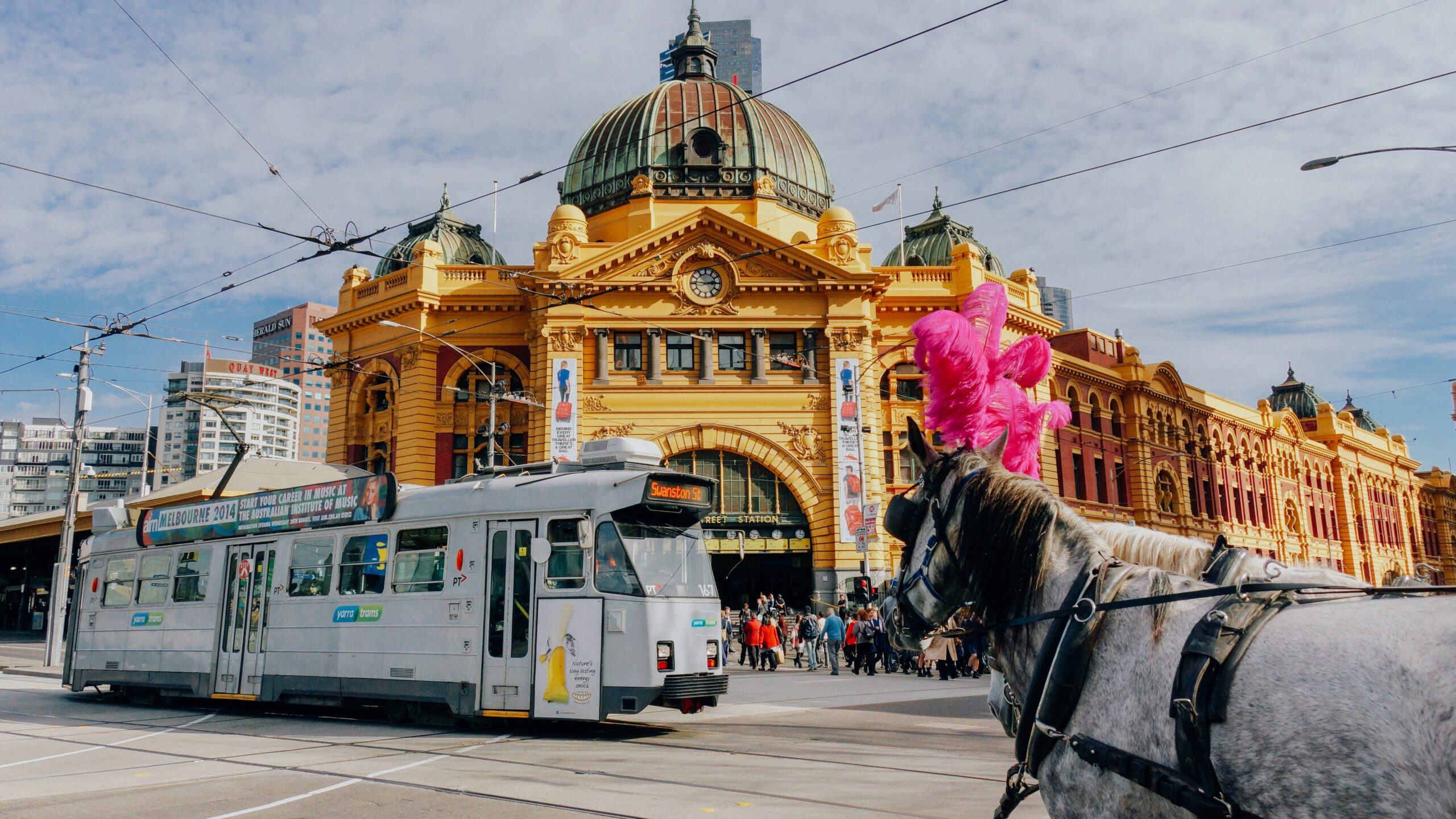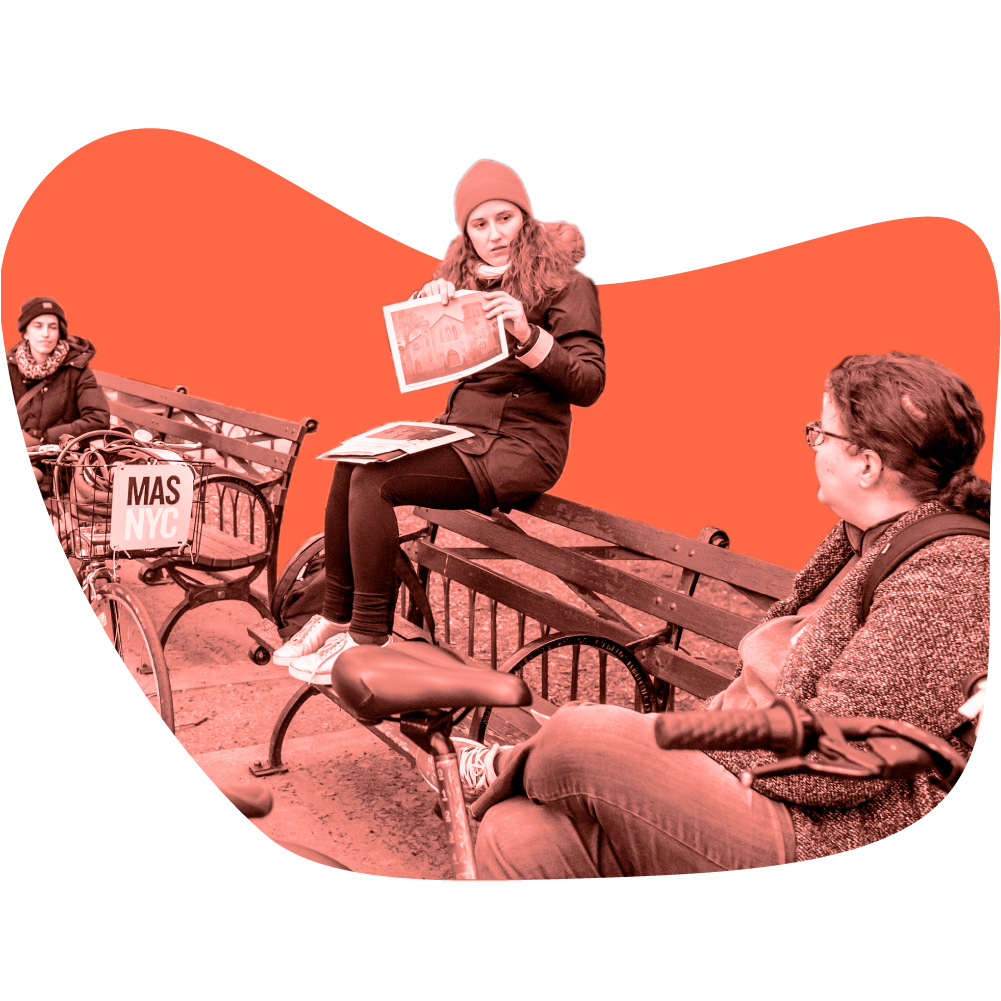
Annie Bolitho
In Melbourne we’re excited by the way Jane’s Walk brings a wide range of voices and ideas into discussions about cities, neighbourhoods and community engagement. We’ve been active here since 2013 with a core team of Annie & Janet Bolitho and Judy Stanton. The walking festival is on the first weekend of May and it’s autumn, the best time for walking in Melbourne. We’ve also teamed up with Open House Melbourne for Jane’s Walks at the end of July on Open House weekend.
Walk Stories
Walk stories are chronicles of moments, ideas, insights, and images from a Jane’s Walk, curated and submitted by local participants, walk leaders, and city organizers.
July 2017 – Jane’s Walk Melbourne Story
Text by: Random Selection on Swanston Street
Jane’s Walk Melbourne began a partnership with Open House Melbourne (www.openhousemelbourne.org) in 2017 that has generated huge interest in Jane’s Walk. This was one of the first walks on Open House weekend and it was booked out in half an hour. One thing I’ll never forget was that all the walkers were waiting at the meeting place ten minutes ahead of the starting time. They were keen! In 2017 the Open House theme was ‘What would Jane do?’ following the success of the movie ‘Citizen Jane, Battle for the City’ which Open House had put on in Melbourne. A number of the walkers had seen it and were very inspired by her. Swanston Street goes through Melbourne north to south, and I’d chosen a random selection of places that demonstrated either the indirect influence of Jane Jacobs’ on our city, or reason to ask what she would do. Swanston Street highlights elements of an urban ecology. It’s sidewalks have been increased in size substantially since the 1970s and the position of cars has waned to nothing but delivery trucks. We began at ‘Aurora Melbourne Central’ a building set for 84 storeys above ground, then having reached 12 and ended at Federation Square having stopped to talk all along the way. The walk revealed that each walker brought a story, for example of being a worker in the city, a migrant to the city, an architect of the city, or simply a city lover. Because we’d enjoyed ourselves and weren’t ready to say goodbye, we stopped in at Flora for dosa and masala chai after the walk.
July 2017 – A Fertile Yarra, in memory of Glenda Lindsay
Walk Leader: Annie Bolitho & collaborators.
Text by: Peta and Annie
This walk was in memory of Glenda Lindsay, a powerful advocate for urban food in Melbourne. It was organised by a collaboration of friends and colleagues three months after Glenda died. Much of Glenda’s work took place in the City of Yarra, a municipality close to the CBD. Here’s a piece I wrote for the Jane’s Walk blog before the walk. ” All the collaborators on the walk on 6th May are people who worked alongside Glenda in the the inner urban area of Fitzroy, and were inspired by her. Peta Christensen, is a permaculturist and food systems thought leader from Cultivating Community http://www.cultivatingcommunity.org.au/ which has oversight of community gardens at public housing estates and develops sustainable community food projects. Kate Dundas is a landscape architect and urban designer, who’s on the board of 3000 acres http://3000acres.org/about-3000-acres/, which gets food growing happening in the inner city through influencing the the public and private sector to rethink vacant land use, and giving community groups the knowledge and skills they need to make it happen. Lisa Coffa is City of Yarra’s Waste Minimisation Coordinator http://www.yarracity.vic.gov.au/services/Waste-services/food-know-how/ and she’ll talk about the composting from cafes initiative started back in 200 which has grown into a multi-council waste reduction strategy. We love Food Swap! http://www.cultivatingcommunity.org.au/food-systems-projects/urban-harvest/ And it happens to be on the first Saturday of the month. There will be a number of buddies at that stop. They’ll have herbal tea waiting for the walkers and we’ll break into groups to talk, and make bunting out of the triangles of fruit/vegie/chooks fabric that Glenda cut out in the last weeks of her life. On the bag of bunting she wrote ‘for Peta with love – have fun with these! xx’ We will! Our final stop is a small productive sidewalk garden. http://tramstop22.blogspot.com.au/ Community gardens in the inner city are now better accepted, through the creation of guidelines http://www.yarracity.vic.gov.au/environment/Community-gardens/ and liaison between council and locals. In the early days, at Tramstop 22, Glenda carved out this notorious small garden in the bitumen, and created espaliered apple edges, and bountiful herbs and plants. The garden raised the ire of various councillors and council staff, and was often on the cards for demolition. It’s survived and inspired other inner city gardens! Peta and I decided when we planned the walk that it would be about urban food, and how to be involved. A community of active involved people is expanding the scale of food growing in the city, and getting new and diverse people involved. Together we enjoy making something beautiful of it. Together we influence change. The walk is not a memorial, but a looking forward with the benefit of experience.”
May 2018 – It was gone in a minute
Walk Leader: Annie Bolitho
Text by: Annie Bolitho
We met at Preston St, Preston a random street with seemingly nothing to remark on. Preston’s a neighbourhood in the inner city of Melbourne that’s changing fast. I wanted to get people talking about what’s happening. The first stop was a demolition site. I showed some artwork I’m doing about the house that was there a few weeks’ before. A man sitting at the back of his shop called out to us. He had lots to say about the house and fruit trees that had been on that block. He loved them. We looked at houses, their walls, street numbers and doors. One walker wrote down the fruit trees we saw – feijoa, nectarine, apricot, citrus, cherry plum, fig, olive, peach, cherry guava. We stopped at a house on a lean – everyone loved it! Maybe it had ghosts. We looked at the standardised townhouses that are replacing 1960s and 1970s homes. One man said as we walked to have a dumpling lunch at the end of the walk that it was a remedy. What for? I asked. ‘We’re all so busy,’ he said, ‘it was wonderful to spend a couple of hours walking slowly, looking at detail, and getting to know each other.’ This walk is part of a larger project ‘Funeral for a House’ that aims to mark loss of character and place qualities, through documenting houses and memories, and growing fig tree cuttings.
May 2018 – Spot the Sculpture
Walk Leader: Judy Stanton
Queen Victoria Gardens are 110 years old centrally located steeped in history and largely unexplored. Each season brings exquisite beauty and there are thirteen sculptures to be found and each reveal a story that in turn speaks volumes about the evolution of parks and their use. This walk is enjoyable exploratory and great introduction to Melbourne.
May 2018 – Amess Street Promenade
Walk Leader: Kath Walters
Text by: Kath Walters
Amess St Promenade was a free Jane’s Walk event in which Amess Street residents promenaded along the street in a nod to our rich Italian heritage.
Why a promenade?
Amess Street has a rich heritage. Carlton is built on the traditional lands of the Wurundjeri people. By the 1950s and 1960s, the suburb became known as ‘Little Italy’. Until 1971, the Italian population of North Carlton was 28.5%. Today it is around 4%. The lovely Italian tradition of la passeggiata inspired this event. It’s a simple way for us to meet our neighbours and feel a little more at home in our community.
“As dusk softens in Italy, something in the air tugs people from their homes and workplaces for one of the enduring traditions of Italian life: la passeggiata (the promenade). The main purpose of this evening promenade is to see and be seen (vedere e farsi vedere).” (Source: Fordor’s Travel)
How we promenaded?
It was easy. On Saturday 5 May at 5 pm we simply came out our front doors and went for a walk on Amess Street. As we walked slowly, enjoying the sights and sounds of this remarkable street, we met neighbours and shared stories about our street and its history.
Who came?
About 14 people came out onto the street. They were current residents, friends of residents and interested folks. It was a beautiful, balmy autumn evening.
Why I organised this event?
I moved to Amess Street two years ago. I am a writer and I love stuff that makes living in the city more fun like Jane’s Walk. I wanted to meet my neighbours, and create a very simple event.
What I learned?
I learned a lot about the intimate history of the street, who lived where, why and for how long. I learned that one house used to be a dance hall, and had since been bought by one child of a couple who met there. I discovered that one of Melbourne’s iconic Italian restaurants, Enoteca, started in my street, and its old facade remains. I was invited to snip off the overhanging leaves of a bay leaf tree by the residents. One of my friends met up with an old acquaintance who she hadn’t seen for years and now plans to meet for coffee. It was a great evening. All in all about an hour or so of pleasant walking and chatting.

Did you participate in a Jane’s Walk in this city?

